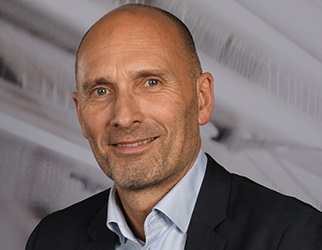MARKET STUDY: SUCCESSFUL OUTCOME OF FALL PREVENTION PROJECT IN DANISH COMMUNITY WITH SIGNIFICANT DECLINE IN FALL RATE
It’s a well known fact that elderly, who have already suffered a fall, have an increased risk of suffering more falls. In fact, the risk of suffering a second fall is doubled to tripled the year after the first fall. Between 3-10% of the falls cause bones to fracture and in 1-6% of bone fractures, a hip fracture is sustained. Based on the overall change in age demographics, fall-related admission to hospital for people aged 65+ is expected to increase by 100% in Denmark by the year 2040!
PROJECT “IN SAFE HANDS” WITH FOCUS ON FALLS
From both a socioeconomic and a human perspective, the increasing admission rate is disastrous. To address the increase, the Danish Ministry of Health and Prevention and the Danish Society for Patient Safety initiated a project named “In safe hands”. The project has been running for five years and is inspired by a similar project in Norway (1).
The aim is a 50% reduction of the number of falls and fall related injuries requiring medical assistance (2). Target group of the project is elderly receiving primary care. Five communities participate in the project in which a so-called “Fall Package” is established.
The package consists of three elements. Altogether, these elements ensure best clinical practice regarding fall prevention:
- Fall report and initial fall risk assessment
All falls are reported immediately and initial fall risk assessment is carried out within two days. - Fall analysis
Elderly assessed at increased risk of falling are offered a fall analysis within two weeks after the fall. The analysis is carried out within four weeks after the fall. When analyzing the fall, a fall prevention action plan is established. - Fall prevention action plan
Every fall prevention initiative included in the plan is carried out according to the deadline settled for each initiative. Actions taken depend on each fall analysis and the identified risk factors for a fall.
FALL PREVENTION ACTION PLAN
In the fall prevention action plan, the following initiatives are assessed:
- Medical treatment
- Examination of unconsciousness, dizziness and other medical conditions and disorders
- Pharmacological optimization with medical assessment through prescribing doctor
- Physical training, including strength, mobility, gait, balance and potentially vestibular training in case of dizziness or balance problems
- Home environment assessment and modification, including need for a hip protector.
Depending on the fall analysis, osteoporosis treatment, smoking cessation, optimal nourishment and treatment of alcohol abuse are also part of the action plan.
Several professions may be included in the action plan. Some represent local authorities, while others represent external professions. Usually, physiotherapists, occupational therapists, opticians, audiologists, GPs, eye as well as ear, nose and throat doctors, neurologists etc. from hospitals or private clinics are involved. In some communities in Denmark even specialized interdisciplinary fall clinics have been established[3].
PROJECT OUTCOME
The project outcome is continuously measured, and so far the result is very positive, particularly in the municipality of Sønderborg, where home care district “Fjord” has reduced the number of monthly falls from eight on average to less than four falls per 100 subjects over a period of two years.
Undoubtedly, care givers in Sønderborg have done a tremendous job that has gained national as well as international attention. “When I travel domestic and abroad, people ask me about Sønderborg and what has been done, and they would really like to visit our district”, Project Manager, Tina Lynge from Danish Association of Patient Safety, says.
Hundreds of risk factors for falling complicate the process. Risk factors are individual and must be individually assessed along with actions to address the identified fall risks. “During the first project year, the falls rate wasn’t reduced. That was very frustrating, because we thought we did everything we could. But instead of giving up and put focus elsewhere, we kept on working systematically, constantly developing new work tools”, Christel Bräuner Sørensen, nurse at home care district “Fjord” says and adds: “Without the interdisciplinary teamwork between home care and home nursing, it wouldn’t have been possible to achieve these ground-breaking results”.
Main ingredients in the Sønderborg recipe on fall prevention are management support and the interdisciplinary teamwork between social and health care assistants as well as social and health care workers and nurses.
“Cooperation between home care and home nursing care is crucial to create improvements. Home care givers see the home-dwelling elderly for years and have a completely different feeling about them compared to us, the nurses. That is why we complement each other, and when you can see that you actually help the elderly, it’s fantastic”, Christel Bräuner Sørensen says (4).
The project “In safe hands” clearly demonstrates that the only way to take measures that will benefit both the individual and the health economy is to have a fully dedicated focus on the issue and make sure there is a strictly controlled and implemented long-term project plan.
From a hip protector perspective it is important to be aware of this kind of projects, as they may pave the way for a dialogue with the communities, highlighting and explaining the importance of adding hip protectors as part of the prevention plan.
(1) http://www.pasientsikkerhetsprogrammet.no
(2) http://www.isikrehænder.dk



